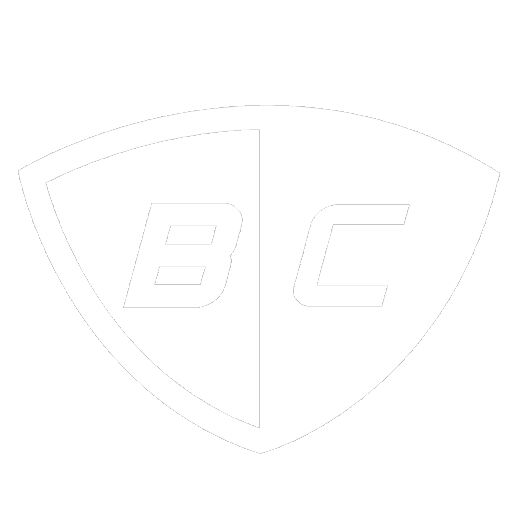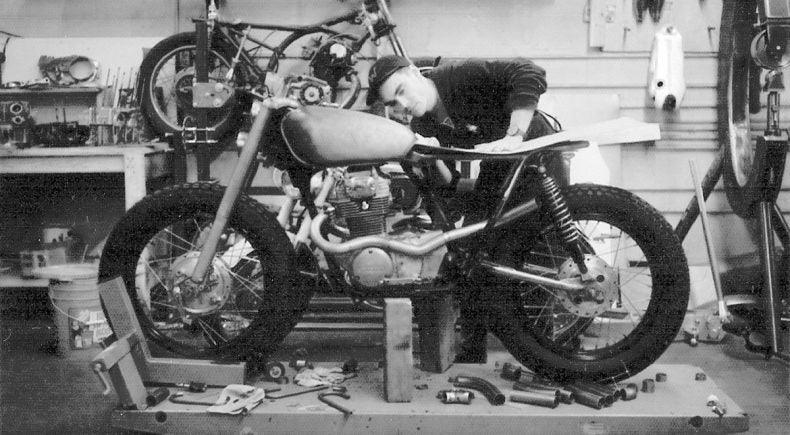Craig Marleau is the founder of Kick Start Garage, a custom vintage motorcycle shop based in Northern California. He specializes in building cafe racers, and was invited by Thor Drake of See See Motorcycles to put his latest custom motorcycle on display at the 2016 One Moto Show in Portland, OR.
British Customs: How did Kick Start Garage get started?
Craig Marleau: Having my own garage and making custom motorcycles has always been in the back of my head. My background is in auto restoration: I worked in a high end restoration shop working on performance cars like Aston Martins, Ferraris, and Duesenbergs and building them to show on the grass at Pebble Beach Concourse D’Elegance for 17 years. But I was always into riding street bikes and racing motorcycles. When I was a youngster, I was getting really close to losing my license, so I sold my street bike and bought a dirt bike. I enjoyed dirt riding for a while, but I really wanted to get back out on the street. So I bought an old BMW clunker to make it hard for myself to get in trouble. I spent my evenings working on the bike with my wife after I got home from my day job. Once we got the bike looking pretty good, we entered it into shows and it started winning awards. Then the economy crashed, and we moved out to Texas where I got a job in bike retail at a dealership. That’s when I started going to track days and road racing, and I really got into cafe racers and vintage bikes in particular. From then on I converted every bike I bought into a cafe racer. We moved back to California after we had kids, where we built a house and I got another job working for a dealership. When the economy tanked again. I didn’t have a job and I needed to reinvent myself, so I decided to finally open a shop working on old bikes, which is where the name Kick Start came from: all the bikes I was working on were kickstarters. The garage grew from there. I heard about The One Show, and we decided we wanted to check it out, so we loaded up the truck with one of our bikes and drove up to Portland. When we got there, we couldn’t find a parking spot, so we asked some guy walking around among all the other guys there if he knew where there was any parking, and he helped us out. We told him we brought a bike with us and asked if he knew if we could show it, and he said we sure could: it turned out the guy was Thor Drake himself. He gave us a spot to show our bike, and we’ve been going to The One Show ever since.
BC: What kind of bikes do you enjoy working on the most?
CM: I love working on Triumphs, actually. Especially air-cooled carbureted ones: they have clean looks and easy lines, and I don’t have to try to figure out how to hide any of the electronics. I like minimalism in my builds, so I like minimalist designs; I don’t even like batteries. I respect the simplicity of carburetors, and the old world ways of doing things. I think a lot of that is getting lost. Especially the craftsmanship of tuning, because you don’t learn anything by downloading a fuel map to your ECU — there isn’t anything hand built or custom about that. With a carburetor though, you can get in there and tune your engine by hand. That’s an art.
BC: How did you get started doing everything by hand?
CM: Out of necessity. At the time, I didn’t have the money to buy parts, so I figured out how to make them for myself. There were no machine shops in the area where I could hire a guy to make them for me, either. So through trial and error, I figured out how to do what I wanted to do. Once you figure out how to make things and do things by hand, it becomes a mentality. You blow the door down and just start making everything you need instead of flipping through a catalog and picking the parts that are closest to what you have in mind. That’s why we don’t have any limitations.
BC: What is it about cafe racers that made you want to start building them?
CM: I fell in love with that whole era of motorcycling. The Italian bikes that came off the production line that were stylized like cafe racers are what first caught my eye, and then I just kept looking back at the bikes from the 60s: the Ace Cafe bikes, the Triumphs, Nortons, Tritons, all of them. I was struck by the style and design of cafe racers — the drop bars, the race-looking lines, the rearsets, the hump seat. The Velocette Thruxton was the first bike I looked at and immediately knew it was a race bike.
BC: Why do you stick with making and working on vintage bikes?
CM: It might sound sentimental, but it’s because I want to give them a second chance. When you find them, they’re either beat down or forgotten, and nobody thinks it’s cool because it’s just an old bike. But it’s pretty darn neat when you roll up on a bike that you built and everyone wants to know all about it. Vintage bikes aren’t cookie cutter bikes: they’re unique, and you can be proud of them.
BC: Where do you see the custom motorcycle scene going?
CM: The custom motorcycle scene is taking a shape, but it’s coming down to the same old thing about motorcycles: motorcycles are like shoes, and you have one for every mood. The trend is moving towards the old school 70s choppers, but where we want it to go and what we think is cool is the vintage motocross scene. In that vein we think the growing scene around scramblers is going to evolve and take people towards vintage motocross.
BC: What are you building for The One Moto Show?
CM: It’s going to be pretty different. We’re cross-blending brands and genres. It’s a ’71 BMW R750R with a sidecar pulling a custom ’73 Bultaco Pursang. We’re highlighting the suspension on the Bultaco with a crazy paint job and a custom seat. I almost feel like it’s too pretty to throw a leg over it, even though it’s meant to be a functional race bike. We’re thinkingbrit of calling it the Taco Truck.










Leave a comment
All comments are moderated before being published.
This site is protected by hCaptcha and the hCaptcha Privacy Policy and Terms of Service apply.